Black Mirror meets Britain's Got Talent: the dystopian nightmare of TV's virtual audiences
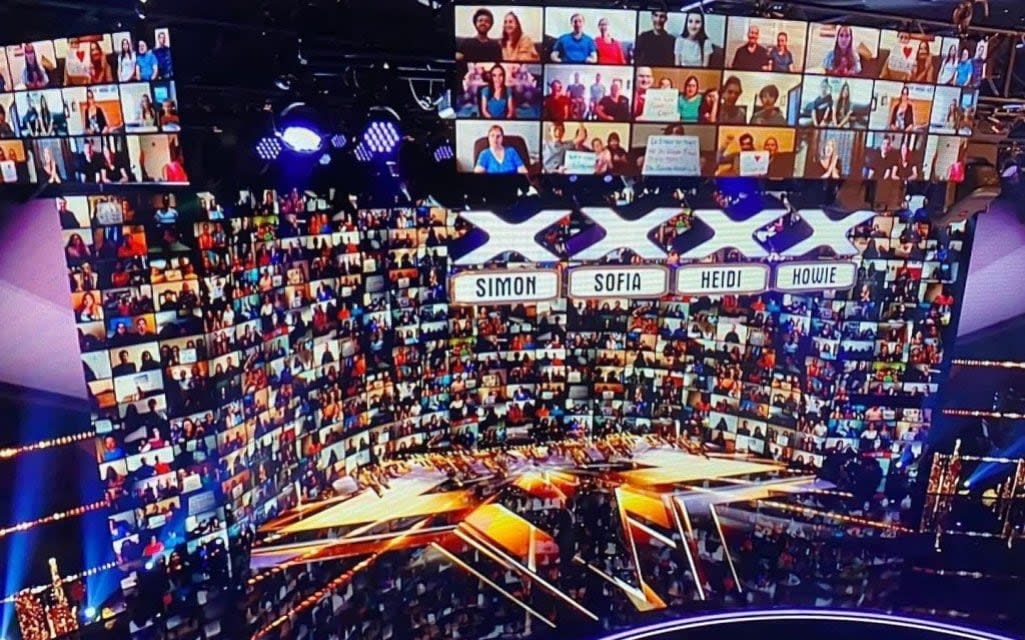
Has anyone seen Charlie Brooker lately? Anyone just popped round to his house check he isn’t sitting in a giant leather chair, stroking a white cat, and laughing? I ask because the state of reality television post-Covid is straight out of his dystopian series Black Mirror, and while it feels a bit much to put the whole situation in his hands, new developments in virtual TV audiences have Brooker’s stamp all over it.
As reopening theatres, circuses and other live entertainment are finding out, it is a struggle to implement atmosphere when you have to implement government-mandated gaps to maintain social distancing.
Welcome, then, to the virtual audience, tuning in from home in scenes straight out of Fifteen Million Merits, a season one episode of Brooker’s show in which the Harlots and Downton Abbey actress Jessica Brown Findlay played a contestant on a talent show, One Big Shot, whose audience comprised avatars controlled by people at home.
In 2020, this has come true. Over in America, NBA basketball games feature a crowd made up of video camera avatars of home viewers. The VMAs awards ceremony too had a blurry audience all phoning in online.
And One Big Shot’s inspiration, Britain’s Got Talent, and its sister show, America’s Got Talent, are using virtual audiences beamed up onto a huge wall to try and recreate the atmosphere lost from the social restrictions.
Britain’s got talent reminds me of that black mirror episode ‘fifteen million merits’ and I absolutely hate it #BritainsGotTalent #bgt pic.twitter.com/C49s73k6hG
— Gracie Marie (@grxciemk) September 5, 2020
While many of us held optimistic, if dim, hopes that life would miraculously pick up where we left off after lockdown the prospect of six months living with further restrictions shows very much otherwise, and key TV series have had to do some serious damage limitation to ensure life can go on somewhat as normal.
The likes of I’m A Celebrity…Get Me Out Of Here! and The Great British Bake Off have lucked out by not having an audience (Bake Off’s contestants agreeing to join a Big Brother-esque bubble for the duration of filming), but autumn’s other big hitters such as Britain’s Got Talent and Strictly Come Dancing rely hugely on their live audiences for atmosphere.
Indeed, Strictly and The Graham Norton Show, which returns this week, will use live audiences, just on a massively reduced scale. It’s not yet clear what precautions will be put in place, but a look at the measures put in place by the US comedy institution Saturday Night Live offers a hint: mandatory temperature checks and Covid tests for audience members on arrival, bookings for social bubble members only, and specific types of masks and face coverings to be worn at all times – it’s a no to bandanas.
The talk shows hosted by Kelly Clarkson, Ellen DeGeneres and Drew Barrymore have plumped for virtual audiences but are using large panels to show off individual audience members more fully. This looks more convincing until group participation is required, at which point it is painfully clear that they are individuals sitting at home.
Last weekend, Vin Diesel launched his new single on Clarkson’s show, which saw the blissful sight of awkward sofa dancing to the song. It’s fine to let rip in a studio under special lighting, less so when you’re wearing a smart shirt and have been instructed to stay visible from the waist up.
Like Zoom, the video conferencing app which flew to ubiquity once lockdown began, the technology being used to bring audiences into studios has been around for a while: think cloud-based software and remote editing, all the way back to news satellite trucks. “My wife makes a lot of shows remotely in our spare room,” says interactive TV veteran Jason George. “I see Simon Pegg or Drew Barrymore on her screen while I’m making a cup of tea.”
George is the chairman of Telescope, the entertainment technology company which for 18 years has provided interactive voting and other audience features for the likes of America’s Got Talent, the VMAs, NASCAR and American Idol. “Doing things remotely is not new, TV has sent satellite trucks to people’s houses for years but that is very limiting and expensive. 2020 has accelerated a lot of stuff, both in terms of how this content is produced, and how it is distributed.”
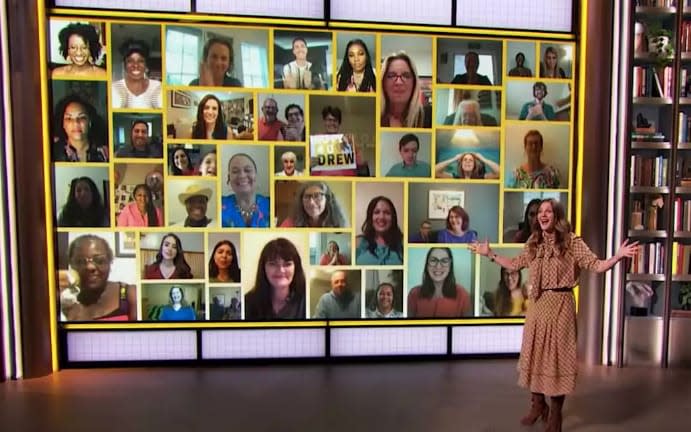
With a virtual audience, George says, a director can mix everything as you would in a live environment, from choosing which people to highlight on screen, to using an augmented reality piece where you place people into a frame, as in The Kelly Clarkson Show, and it looks more realistic. “I send you a web link, rather than something like Zoom, for it to be extra secure, high quality and being able to manipulate it. On Zoom I can only use their infrastructure, whereas if I’m pulling your feed in and I have it in my virtual control room I can configure it to look however I want, whether it’s adding graphics or pulling up multiple people. Then its mixed into whatever configuration we want and broadcast to whatever destination we want, could be TV, could be the big BGT screen.”
There’s one further key element that he says is especially tricky. “The sound is hard to control, You can mix it as you go, but when you’ve got 300 people obviously you can’t allow them to shout. So how do you control that sound which is a live contribution to a live show?”
I experienced all this for myself when my husband and I joined the Britain’s Got Talent virtual audience on September 4, filming the September 19 episode which would later see the magician Magical Bones win the judges’ vote to go through to the live finals – and watching the episode back, it seemed that Britain’s Got Talent’s solution was to dub over audience sounds with familiar crowd noises from previous episodes.
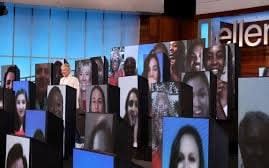
Our email briefing was along much the same lines as any studio filming: don’t wear brands or clashing patterns, have some props ready, prepare to spend four hours locked in to the recording – but with plenty of other details to remind you that not everything was as normal.
Instructions on internet connection, logging in to link an hour before filming started, and making sure you were filming in landscape rather than portrait and that you were well-lit enough to appear on screen (not that there were any guarantees of your face appearing at all). My husband had a lovely time setting up every lamp in the house to point at our sofa, but he may have gone a bit far in installing an HD camera onto my laptop. I’m not sure the studio could see us, and my ancient webcam would probably have done the job.
The tech, however, kept falling over: the studio was often unable to see the audience on the wall, or to hear them, and vice versa. “If something is cutting out at the studio, that’s different, but emphasising the quality of someone’s internet connection is crucial,” says George. “The internet is the most important thing, because at any point in that chain it could go wrong. It’s pushing the limits of lots of these fairly new (last few years) software appliances. That sounds quite severe if it’s going down.
"It’s the simple things that catch you out, right, so we should send them a 20 dollar ethernet cable and tell them to hardwire into their connection so they aren’t using wi-fi. London especially has less availability at certain times because more people are using it.”
Telescope ran this year’s Amazon Prime panels at Comic Con, and George says they insisted on tech checks first. “The PR guys will say, ‘We don’t want to waste time on a tech check’, but it’s fundamental, it’s like saying you don’t want to come to rehearsal. If it’s not set up properly and the internet connection isn’t there, we can’t guarantee it working.”
Dealing with the brunt of BGT’s tech problems was the radio presenter-turned-warm-up act Andy Collins, who seemed to have forgotten about the instructions not to drink alcohol. The audience at home were regularly exhorted to get another drink out of the kitchen, and one virtual “BGT punter”, as we were rather revoltingly called, was instructed to drink, over the course of the evening, the entire bottle of Moet and Chandon champagne that he had found in a challenge, in exchange for tickets to the live final.
From a viewer’s perspective, when the technology was up and running, the filming worked well – it was rather nice to be able to wear pyjamas from the waist down and go to the kitchen whenever you got peckish, or when the booze temporarily stopped flowing. Everyone behaved themselves, perhaps due to being in such small groups, and unlike a live studio filming, you could go for a pee whenever you needed.
But technical difficulties meant that sometimes the audience wall couldn’t be seen in the studio, and sometimes not heard. And as much as our cheering and clapping was meant to add atmosphere, we were dubbed over by the usual BGT audience sound effects anyway.
Any concerns about lewd behaviour from audience behaviour came to naught, as once in the wall individuals were impossible to make out, with some apparently failing to turn on any lights, let alone turn their sitting room into Kew Gardens at Christmas as my husband had done.
A side effect of this virtual audience meant that acts that had huge theatrical productions came off best. I felt awful for Myra DuBois, the drag queen comic who was up first, and who I have seen absolutely kill a sell-out crowd at the Hammersmith Apollo. Without the support of a crowd in person – with the best will in the world, my husband and I’s howls from south London just couldn’t cut it – Ashley Banjo’s criticism, that her audition performance was better, went unchallenged.
“That was very frustrating to me because of course it was better, it was at the Palladium in front of 2,000 people,” says Gareth Joyner, the actor behind Myra DuBois. “But you don’t want to complain because you look like a bitter Betty, don’t you?”
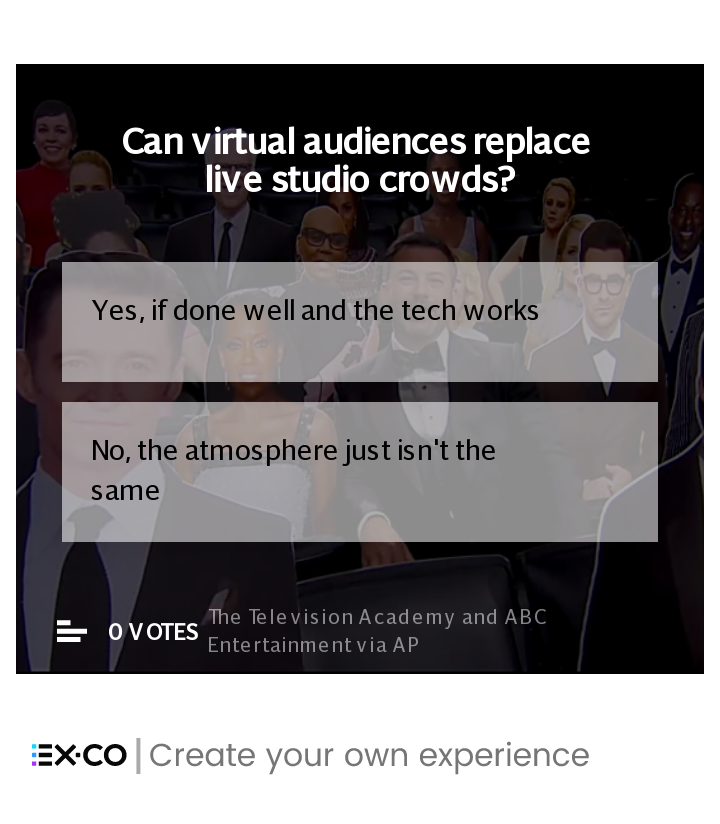
Did the audience have the same impact as in his audition? “I could see there was a screen of people but you couldn’t make out individual faces. Everyone was fairly indistinguishable; it was like looking at a photo on one of the very early colour mobiles, quite grainy. It’s a big bloody screen, it goes from the floor to the rafters so that was quite imposing, sort of Truman Show stuff.”
For the first five months of lockdown, Joyner as Myra did a weekly show streamed down a camera live to Facebook. He became used to working without audience and hoped it might be a transferable skill to filming in a studio. “I was pleased with the [episode’s] edit because, live, I didn’t like it and it felt really odd. I don’t know if I should be really positive and say, ‘Yeah it was fabulous!’ because it was odd.”
Myra’s social media following has more than trebled since the episode aired, he says, and he has had plenty of supportive feedback, but in the moment, he says, “it was hard to be haunted by the phantom of the 2020 that never was.”
Yet the crowds have an impact beyond that of the contestants. “Even though the studio audience is tiny compared to the home audience, it’s an important component that we maybe don’t recognise,” says Jason George. “I spoke to a friend who’s quite a big name in sports broadcasting, and said I thought sports rights values would go up after lockdown.
"He told me that people are finding that because there isn’t a live audience it isn’t as compelling, it’s more sterile, so viewing figures are going down.”
As though hoping to tap into people’s frustrations with 2020, The Masked Singer US is trialling an alternative to virtual audiences which attempts to ignore Covid altogether. A combination of audience reaction shots from past seasons and small groups standing behind host Nick Cannon and the judging panel give the impression of a live, maskless audience.
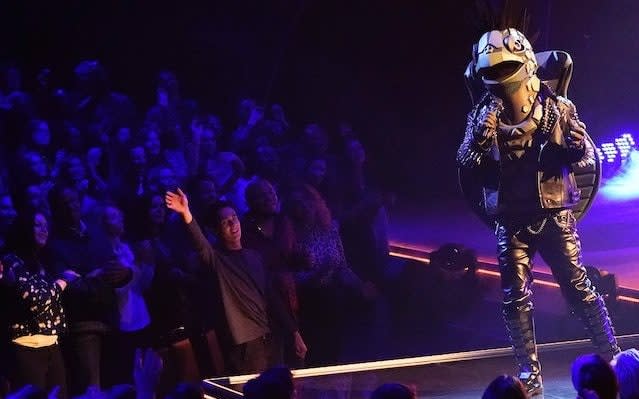
As executive editor Oliver Plestis explained to Variety, “I think we’re all exhausted being on Zooms every day and so is the average viewer. The last thing they want to have is watch a TV show that looks like work.”
However, by not addressing the trickery on screen, or indeed in failing to mention Covid-19 at all, the show may have negated the comforting feel it is aiming for. Refinery 29 journalist Arianna Brockington described the new format as having “major Hunger Games vibes”, saying it was as though the show were asking viewers to, “look at these shiny outfits and do not think about the reality that people are dying!”
Brockington added: “It’s staggering, it's completely outside of reality, but then again, that's The Masked Singer.”
It is impossible to ignore what is happening, which is why having the year continue to be punctuated by familiar programming matters so much. It is even more crucial if you are one of the performers, freelancers, and production staff whose livelihood depends on these shows continuing. Gareth Joyner, aka Myra Dubois, has no regrets about being part of Britain’s Got Talent’s 2020 cohort rather than a future year - even without the audience. “I have friends who haven’t worked at all since March," he says. "So I’m counting my blessings.”


